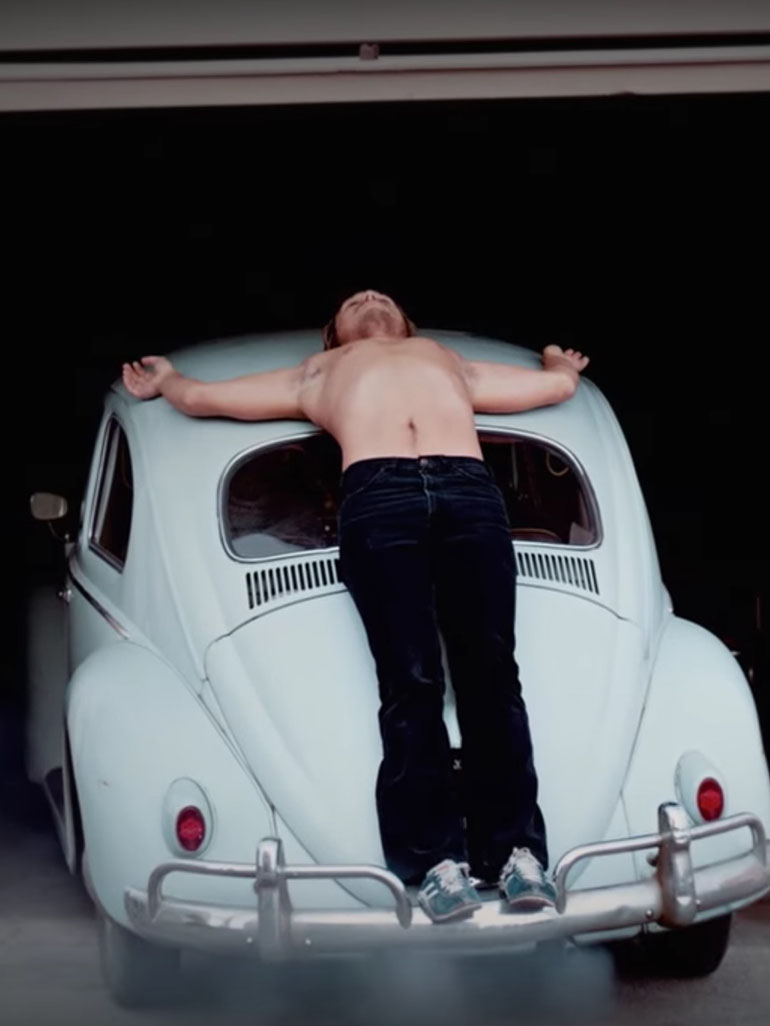Introduction
1 min 45 sec
At 7:45 p.m. I was shot in the left arm by a friend. The bullet was a copper jacket .22 long rifle. My friend was standing about fifteen feet from me.
At 7:45 p.m. I was shot in the left arm by a friend. The bullet was a copper jacket .22 long rifle. My friend was standing about fifteen feet from me.
American sculptor and performance artist Chris Burden 1, who was known for his works in the extreme, passed away May 10, 2015. Many of his works were best described as “shocking”, and the radical nature of his work set him apart from other twentieth-century American artists.
His performance pieces were often depictions of violence in which he was always his own victim: he was crucified to a Volkswagen Beetle, had viewers push pins into his body, was kicked down two flights of stairs, and in the case of the piece being discussed, Shoot (1971), he was shot.
How Burden confronted his audience through ‘Shoot’
Burden’s work forces spectators through the shock of the lived imagery not only to review but deeply analyze their moral selves, the profound nature of misery and the undeniable reality of pain. At a time when society has become desensitized to the excess of violent imagery through the media, he pushes the audience to recognize the reality of suffering, agony and desperation.
What happened during Shoot
“Shoot” is 8 seconds of footage, filmed on November 19, 1971, in a gallery located in Santa Ana, California named “F Space.” With only a handful of his friends in attendance, he proceeded with the piece that he had already announced the intention to the editors of an art journal called Avalanche 23.
With a small number of people in attendance, he performed what was likely his most shocking piece. “Shoot” featured Burden, who was only 25 years old at the time, being shot in the arm at close range by a friend with a rifle. The danger in this piece was obvious. All it took was being off a few inches and Burden could have been killed.
Shoot documentary
Burden stumbling after being shot
Even Burden wasn’t immune to the shock of being shot in the arm as he quickly walked off-screen. Burden implores viewers to listen to the sound of the empty shell as it collides onto the ground. The imagery of the shot man stumbling forward is one that is difficult to forget.
Speaking about the performance, he said 45:
I think everyone has fantasized about being shot themselves, consciously or unconsciously. You read about it, see it on TV, on the news. So everyone – especially in America – thinks a lot about it. And like I said, it’s as American as apple pie to get shot or shoot people.
What happened with the bullet?
The bullet was only supposed to graze Burden’s arm, but the shooter was slightly off target. The shot went through his arm instead of grazing it. Although the film was only eight seconds long, it burns itself into the mind of the audience breaking through desensitization that is felt by most indifferent viewers.
Aftermath of being shot
Following the performance, Burden and his friends were left to deal with the reality of a gunshot wound to the arm. They went to the hospital and had to explain the performance piece to the hospital staff that was left in disbelief. This part of the story reminds of the reality of Burden’s work, the reality of the violent brutality he was representing through the self-inflicted violence and resulting injury.
The meaning of the performance
The piece is a reminder of the fundamental reality of our corporeal life and corporeal reality. If the bullet had only moved a few inches in one direction, Burden would have likely been killed. If it had moved a few inches in the other, he wouldn’t have been touched by the bullet.
It brings us to the realization that the gun holder had Burden’s life in his hands, just as soldiers in Vietnam held lives in their hands, politicians held the soldiers’ lives in their hands, and so forth.
Burden’s work, so graphic and shocking, was also committed to the re-sensitization of people to the violence that had become less and less shocking due to its constant imagery being invoked in the media while serving to challenge society’s views on what “fine art” truly is.
Location of ‘Shoot’
F-Space
1514 E Edinger Ave (at Grand)
Santa Ana, CA 92705, USA
More by Chris Burden
Explore nearby
Santa Ana, CA, USA
 Richard Jackson's Bad DogInstallation ended (dismantled in 2013)5 km away
Richard Jackson's Bad DogInstallation ended (dismantled in 2013)5 km away Thomas Struth in DisneylandPhoto documentation (2013)12 km away
Thomas Struth in DisneylandPhoto documentation (2013)12 km away Olafur Eliasson turned rivers greenInstallation ended (in 1999)49 km away
Olafur Eliasson turned rivers greenInstallation ended (in 1999)49 km away Herbert Bayer's Double Ascension52 km away
Herbert Bayer's Double Ascension52 km away Susan Silton covered entire museum with tarpInstallation ended (dismantled in 2007)54 km away
Susan Silton covered entire museum with tarpInstallation ended (dismantled in 2007)54 km away





